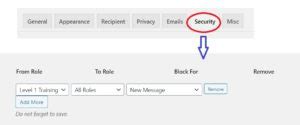The role of Blokkkad Award in Cryptative Mining
The cryptocurrency mining has long been a key component of blockchain ecosystem, allowing to create and trade new coins. For miners, the reward for their efforts is not only financial, but also a significant computer power needed to solve complex mathematical problems. In this article, we will explore the role of a block of awards in the Cryptumellite mining and explore how they affect the entire network.
** What are the blocks of prizes?
In the blockchain network, each new block is added to the previous block chain, creating a permanent record of transactions and activities. The process involves checking these transactions using complex mathematical algorithms, known as proof of work (POW). The miners competed to deal with these algorithms, which requires significant computer power.
Role Block Awards

The block block is incentives that motivate miners to perform these calculations. In most cryptocurrency networks, the block of awards are rewarded in a new cryptocurrent currency, such as Bitcoin or Ethereum. The award is usually calculated by dividing the total hash rates of all mineral devices (computers) in the network with a predefined number of paths.
How do the blocks of prizes work
When the miner solves warriors algorithm, it generates a unique digital signature, which proves that their budgets are correct. As a result, they were awarded with newly minted cryptocurrency coins. The block reward is usually 6.25 BTC (Bitcoin) for Bitcoin Blockchain networks and 50 eth (Ethereum) for the Ethereum blockchain network.
Here’s an example of how it works:
- Rudar solves the POW algorithm on the Bitcoin network.
- They generate a unique digital signature, which proves that their budgets are correct.
- The block reward is calculated by dividing the total hash rate of all mineral devices (computers) in the network for 6.25 BTC.
- New cryptocurrency coins (eg 1 BTC or 1 ETH) were awarded a miner.
Impact on Difficulty Rewarding Block
As more miners join the network, the number of computer power needed to address the POW algorithms is increasing. This leads to a decrease in the block of block rewards, which affects:
- Block Frequency : With increased computer power, several calculations are required to create new blocks.
- Transaction processing time : slower transaction processing time stems from increased frequencies of block formation and reduced difficulty with a block award.
Influence on network safety
An increasing computer power needed to solve the power supply algorithms also increases the network safety. Miners less like to tear down or use sophisticated methods for theft of awards, as awards become diluted.
However, this also brings new risks, such as:
- 51% attack : If most miners control a large portion of the network computer power, they can start 51% of the attacks and download the network.
- Forking : Increased risk of network security violation requires more powerful safety measures to prevent potential attacks.
Conclusion
The Block Award Mechanism is at the center of the cryptocurrency mining, ensuring the creation and trading of new coins. Although the block awards play a key role in maintaining the network safety, they also make risks that require careful consideration. As the blockchain ecosystem continues to develop, it will be crucial for miners to develop strategies to relieve those risks that maximize their requirements.
Recommendations
To optimize your mining experience and diminish the impact of difficulty with the block awards:
- Diversify your devices : Arrange your computer power on multiple networks to reduce reliance on one platform.
2.
